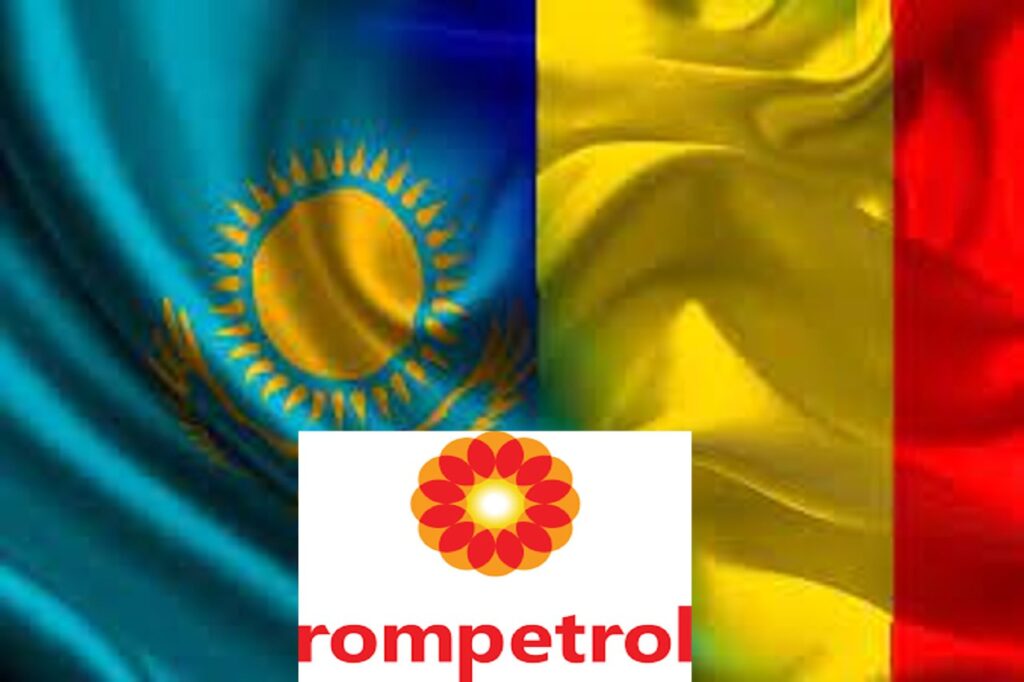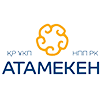
The acquisition of Romanian oil refineries by the KazMunayGas in 2007 was presented to the public as promoting Kazakhstan’s oil interests outside the country. Definetely, owning processing facilities in Europe (where Kazakh oil export goes), produce oil products, receive high income from the premium European market is a good business plan. It should be taken into account that the republic supplies about 80% of its oil to this continent.
What KMG did: It acquired a multi-billion dollar business with nearly $1 billion in debt, invested, lost some of the shares to the local government, set up a $1 billion fund to finance local projects and failed year after year to make a steady profit.
By the Black Sea
At the end of August KMG reported that production costs for the first half of this year increased by 54.2% compared to the first half of last year and exceeded $1 billion, mainly due to rising losses from oil derivatives of KMG International (KMGI) which had to take out a loan of $126 million to finance working capital.
At the same time, processing at the Romanian plants of KMGI (Petromidia and Vega) decreased by 15.3% and 13.3%, respectively, to 2.5 million tons. KMG stated that ‘the decrease in processing is associated with the shutdown of the Petromidia plant for scheduled turnaround this spring as well as due to disruptions in the supply of raw materials in the Black Sea due to adverse weather conditions’. It could be said that it is a common for any refinery to reduce production due to supply disruptions, however, this happens almost every year with KMG refineries in Romania (either a fire, a repair or a reconstruction).
KMGI is The Rompetrol Group (TRG) (rebranded in 2014) acquired by KMG for $1.6 billion in 2007. KMG announced (in a 2008 report) that it bought a 75% stake in a Romanian oil company, remaining 25% of the shares from Rompetrol Holding were acquired already in 2009.
However, according to other sources, KMG paid 2.70 billion euros or $3.67 billion for a 75% stake in the Rompetrol group. At the same time KMG had to take out a loan of $3.1 billion to conclude the deal.
What was Rompetrol? Firstly, it was registered in the Netherlands but the company’s assets were located in Romania, France, Spain and Southeast Europe and specialized mainly in oil refining, production and retail of petroleum products.
TRG had three production assets. The first is the Petromidia refinery. It is located on the Black Sea coast, 225 km from Bucharest and 20 km from the seaport of Constanta. The refinery was built in 1974-1979 and upgraded in the 1990s and 2005 to process sour and heavy Urals oil. The refinery’s oil refining capacity at the time of acquisition was 3.8 million tons per year. In 2012, KMG increased the capacity up to 5 million tons per year by investing $1.5 billion in the modernization of the refinery over 5 years.
The second major asset is the Vega refinery located near Bucharest in the city of Ploiesti. Built in 1905, modernized in the 1970s. The design processing capacity is 500 thousand tons per year. The refinery specializes in the processing of naphtha, heavy hydrocarbon fractions and fuel oil.
The third is the petrochemical complex Petrochemical which is integrated with the Petromidia refinery. Petrochemical produced polypropylene, low-density polyethylene and high-density polyethylene of various grades.
The company also had a network of 900 gas stations in Romania, France, Spain, Moldova, Ukraine, Bulgaria, Albania and Georgia.
It could be considered that the deal is quite profitable with two refineries and one petrochemical complex as well as a network of gas stations in several European countries with access to the sea. However, it turned out that the company owed hundreds of millions of dollars in taxes, the refineries were outdated and needed upgrade. Moreover, there were issues with the privatization.
Suitcase without a handle
Almost immediately after the conclusion of the transaction it turned out that TRG’s subsidiary, Rompetrol Rafinare which owns two refineries and a chemical complex owed the Romanian government 570.3 million euros in taxes.
KMG managers decided to negotiate and act ‘differently’. They offered the local authorities shares in the company in exchange for debt relief. At the same time, they intended to issue an additional shares in order to dilute the share of the new co-owners. However, it turned out that intelligent people are also sitting in the Romanian government who began to raise all ever recorded violations and claims against the company which resulted in numerous lawsuits on environment, taxes, property seizures, etc. KMG had to pay somewhere, buy out shares, pay off debts (spending hundreds of millions of dollars). Ultimately, after almost 10 years of litigation KMG had no choice but to give the government almost half of Rompetrol Rafinare, the company’s main asset. Today, according to the company, shares are distributed as follows: KMGI 48%, the Romanian state 44%, other companies 6.6%, individuals 0.5%.
In October 2018 KMGI and the Romanian stated-owned Societatea de Administrare a Energie signed an agreement to establish a joint Kazakh-Romanian fund with a commitment to invest $1 billion in the country’s energy sector. At the same time, the projects were financed at the expense of KMGI, although it owned an 80% stake in the entity and the government owned 20%.
Two projects were identified for financing, the total cost of which exceeded $200 million. In particular, one of them was the construction of a new power plant at the Petromidia refinery site. In addition, it was supposed to provide electricity and heat to the city of Navodari. The second project involved the construction of 80 new gas stations in Romania.
Prior to the creation of the fund KMG tried to sell part of KMGI. In December 2016 an agreement was signed to sell a 51% stake for $680 million to the Chinese China Energy Company Limited (CEFC). The parties agreed that CEFC undertakes to invest in the development of new projects in Romania and other EU countries and KMG will continue to supply oil, ensuring the expansion of the company’s main operations in Europe. In July 2017 the deal was approved by the Romanian authorities but the Chinese company abandoned the acquisition. It is assumed that Chinese investor studied the documents, made inquiries and realized that the refineries would entail more expenses. In addition, there was information that the Romanian authorities had more questions about the legality of Rompetrol’s privatization. It was privatized by the company’s staff in the early 1990s. Later, a well-known Romanian billionaire with other businessmen bought out a major stake and sold to KMG.
In 2019 KMG’s Managing Director for International Projects Azamat Zhangulov said: ‘KMGI also had a serious debt load, the company started earning only in 2012 and at that time the debt was about $1 billion. Today it is about $400 million. Roughly, from 2012 to 2018 the company earned about $600 million which was used to pay off debts.’
From the reports of the company during 2012-2015 Rompetrol suffered losses in the amount of approximately $207 million to $45 million annually. In 2016 it received a net profit of just over $14 million, in 2017 $80.4 million, in 2018 $40.2 million, in 2019 $3.1 million, but from 2020 again loss in amount of $211.3 million.
This year, due to the rise of prices Rompetrol Rafinare recorded a profit of $191 million in the first half of the year against a loss of $8 million a year earlier. At the same time, the company reports that its contribution to the state budget of Romania during 2007-2020 exceeded $19.4 billion. In Romania the company invested more than $2 billion with $1.4 billion in the refining sector. Good investment for Romanians.
According to rough estimates, it turns out that KMG has spent more than $6.1 billion on Romanian assets since 2007 (purchase, investments in the upgrade of the Petromidia refinery, investment fund) but still cannot stabilize profits. This is not counting the supply of oil at a reduced price, annual expenses for maintenance, repairs and other unadvertised expenses.

